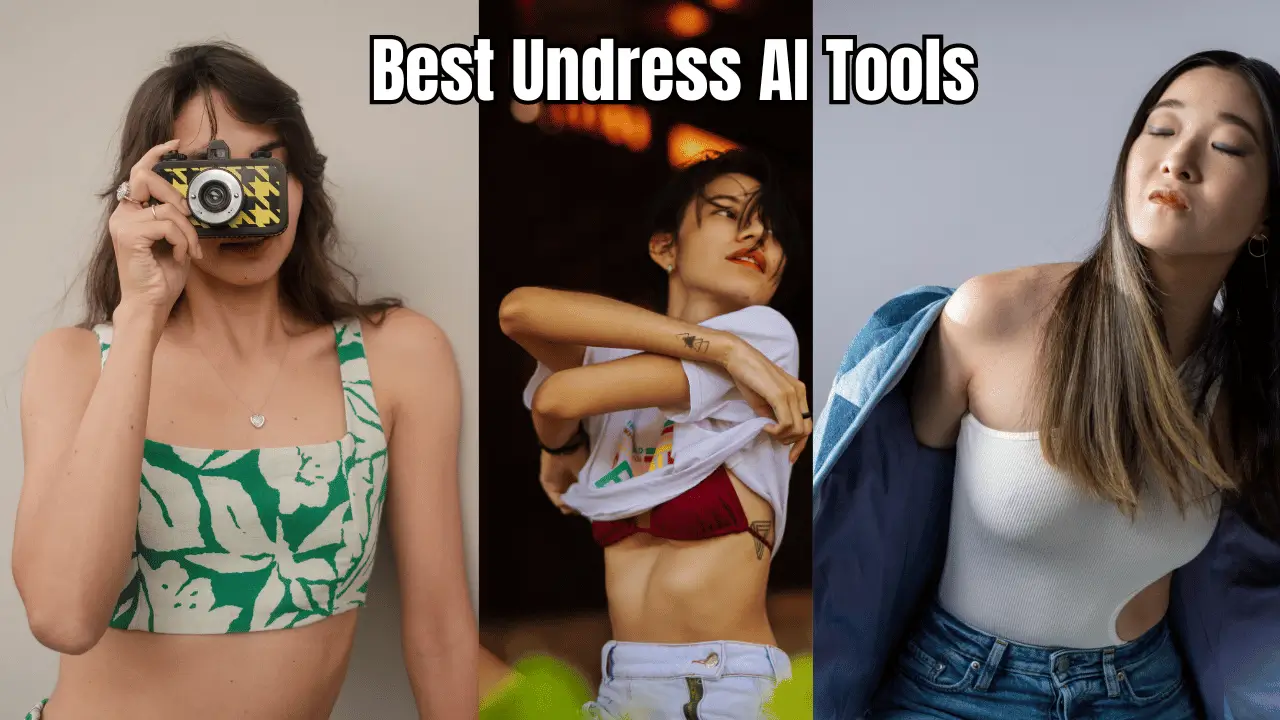Is it truly possible to strip away layers of clothing with the mere click of a button, revealing what lies beneath? The emergence of AI-powered "undressing" tools throws open a Pandora's Box of possibilities, and raises critical questions about consent, privacy, and the very nature of image manipulation.
The digital landscape is witnessing an unprecedented surge in artificial intelligence (AI) applications, transforming industries and reshaping our daily lives. Among these innovations, a particularly controversial and ethically complex segment is the realm of AI-driven "undressing" technologies. These tools, often marketed with promises of seamless image alteration, are capable of removing clothing from photographs, generating nude or semi-nude depictions of individuals based on existing images. The accessibility and capabilities of these technologies are evolving rapidly, posing significant challenges to personal privacy, ethical considerations, and the potential for misuse. These tools leverage advanced AI algorithms, including deep learning and neural networks, to analyze and manipulate visual data with increasing sophistication. The process typically involves uploading an image, identifying the subject, and then using the AI to "remove" clothing and generate an altered image. The user is then presented with an output that, depending on the specific tool, can range from a basic alteration to a highly realistic and detailed depiction.
This table highlights the key features and functionalities of AI "undressing" tools.
| Feature | Description |
|---|---|
| Core Functionality | Removal of clothing from images using artificial intelligence. |
| AI Technology | Utilizes advanced AI algorithms, including deep learning and neural networks, to analyze and manipulate visual data. |
| User Interface | Generally involves uploading an image, identifying the subject, and initiating the "undressing" process. Often involves marking or selecting the clothes to be removed. |
| Output Quality | Varies depending on the tool, ranging from basic alterations to highly realistic and detailed nude images. |
| Speed | Often touted as being fast, with "one-click" or "seamless" processes. |
| Target Audience | Marketing often targets users curious about the technology, as well as those seeking to edit or alter images for various purposes. |
| Platforms | Available as web-based tools, mobile apps, and sometimes integrated into other software. Some tools operate through Telegram bots. |
| Ethical Concerns | Significant ethical implications, including the potential for non-consensual image creation, privacy violations, and the spread of harmful content. |
| Legal Ramifications | May violate privacy laws and regulations depending on the application and jurisdiction, especially regarding the creation and distribution of non-consensual intimate images. |
| Examples of Tools | Undressher AI, Muke AI, Openart AI, Undresser AI, Clothoffbot (Telegram) |
These technologies have gained a foothold by offering a seemingly simple process: users upload an image, and the AI, through complex pattern recognition and generative algorithms, produces an altered image. The user experience is often streamlined, promising ease of use and immediate results. Phrases like "undress with just one click," "seamless and intriguing experience," and "generate women undress photo or girl undress photo in one click" underscore the seductive simplicity of the user interface. This accessibility, however, belies the complex ethical and societal implications of the technology.
Consider the array of applications where these technologies are being marketed. Tools like "Muke's undress ai" position themselves as a means to "make anyone deepnude," while others, such as "Undressing ai," directly promise the ability "to see anyone naked." The rhetoric of exploration and novelty is frequently used, with phrases like "Explore the power of nudify ai" and "Experience innovative ai undresser tools" attempting to normalize the usage of such technologies. Moreover, the marketing frequently emphasizes speed and efficiency, with claims like "fast, and discreet" alongside promises of "precise and realistic results." This focus on speed, convenience, and visual realism is used to draw users in, often with little or no mention of the ethical considerations involved. Further, the very notion of "trying it now," is promoted, presenting the tool as something that's not merely a tool but also as an "experience" in itself.
One of the most pressing ethical concerns is the potential for non-consensual image generation. This poses a significant threat, as it enables the creation and distribution of intimate images of individuals without their consent. This can lead to severe emotional distress, reputational damage, and even threats of violence and harassment. The ability to generate deepfakes of individuals in compromising situations can have devastating consequences, and the potential for malicious actors to exploit these tools for revenge, blackmail, or other forms of harm cannot be overstated. The very notion of "undressing love girl for you" or making "anyone deepnude" raises serious questions about respect for bodily autonomy and personal privacy.
The ease with which these tools can be accessed and used exacerbates these ethical concerns. Several platforms offer free access to AI-powered undressing capabilities, lowering the barrier to entry and making it easier for anyone to create altered images. Tools like "Undressher AI" and "Discover undressher, the ultimate free undress ai app" actively promote this ease of access. The potential for misuse is further amplified when such tools are integrated into platforms like Telegram, as with the "clothoffbot," where the lack of robust content moderation can facilitate the spread of harmful content. The speed and simplicity of generating images through AI further compounds the risk of misuse, making it easier to create and distribute altered images on a large scale.
The quality of the output is another critical consideration. While some early iterations of these tools produced results that were clearly artificial, advancements in AI technology have significantly improved the realism of the generated images. The ability to create images that closely resemble the original, as promised by tools like "Undresser ai," adds to the concern. The more realistic the output, the greater the risk that these images will be perceived as genuine, leading to increased likelihood of non-consensual image creation, privacy violations, and the spread of harmful content. As AI-driven image manipulation tools become more sophisticated, it becomes increasingly difficult to distinguish between real and AI-generated images.
The potential for harm extends beyond the individual, impacting broader societal norms and values. The normalization of deepfakes and AI-generated nude images can undermine trust in visual media, making it more difficult to distinguish between authentic and manipulated content. This can erode the credibility of images, particularly in situations where they serve as critical evidence or play a crucial role in establishing the truth. The widespread use of such technologies can also reinforce harmful stereotypes, objectify individuals, and contribute to a culture of exploitation.
The legal landscape surrounding these technologies is complex and evolving. Laws regarding privacy, data protection, and image manipulation vary by jurisdiction. However, the creation and distribution of non-consensual intimate images is generally prohibited. Legal challenges arise when attempting to regulate these technologies, especially considering the global reach of the internet and the difficulty in enforcing laws across borders. The anonymity afforded by the internet also presents challenges in identifying and prosecuting those who misuse these tools. As these AI technologies advance, legislation must evolve to keep pace. This may include strengthening existing privacy and data protection laws, as well as introducing new regulations specifically addressing the creation and distribution of AI-generated content. Law enforcement and legal frameworks must adapt to address the unique challenges presented by deepfakes and other forms of AI-driven image manipulation.
Looking ahead, it's essential to consider the future implications of these technologies. As AI continues to advance, the capabilities of these "undressing" tools will only improve, raising the stakes in terms of ethical considerations and the potential for misuse. The lines between reality and artificiality will blur further, with far-reaching consequences for individuals and society. The need for responsible innovation, robust ethical guidelines, and comprehensive legal frameworks becomes increasingly urgent.
Several avenues for mitigating the potential harm of AI-driven "undressing" tools are possible, including:
- Promoting Ethical Development: Developers of AI technologies must prioritize ethical considerations in the design and deployment of these tools. This includes implementing safeguards to prevent non-consensual image generation.
- Raising Public Awareness: Education and awareness campaigns are crucial for educating individuals about the risks associated with AI-generated content. This can help individuals protect themselves from potential harm and make informed choices about how they share their images online.
- Enhancing Image Authentication: Technologies that can detect and verify the authenticity of images can play a vital role in combating the spread of deepfakes.
- Strengthening Legal Frameworks: Existing laws on privacy and data protection need to be strengthened to address the specific challenges presented by AI-generated content.
- Fostering International Cooperation: Collaboration among governments, law enforcement agencies, and technology companies is essential for addressing the global challenges posed by AI-driven image manipulation.
In summary, the emergence of AI-powered "undressing" technologies presents significant ethical, legal, and societal challenges. While these tools offer a glimpse into the potential of AI, their misuse carries grave risks. Addressing these risks requires a multi-faceted approach. This includes promoting ethical development, raising public awareness, enhancing image authentication, strengthening legal frameworks, and fostering international cooperation. Only through a concerted effort can we hope to harness the benefits of AI while mitigating the potential for harm, thus safeguarding individual privacy and protecting the integrity of visual media in the digital age.


